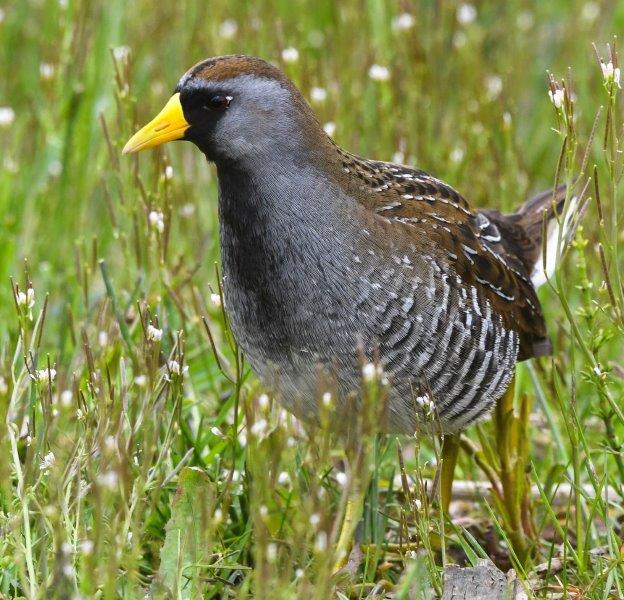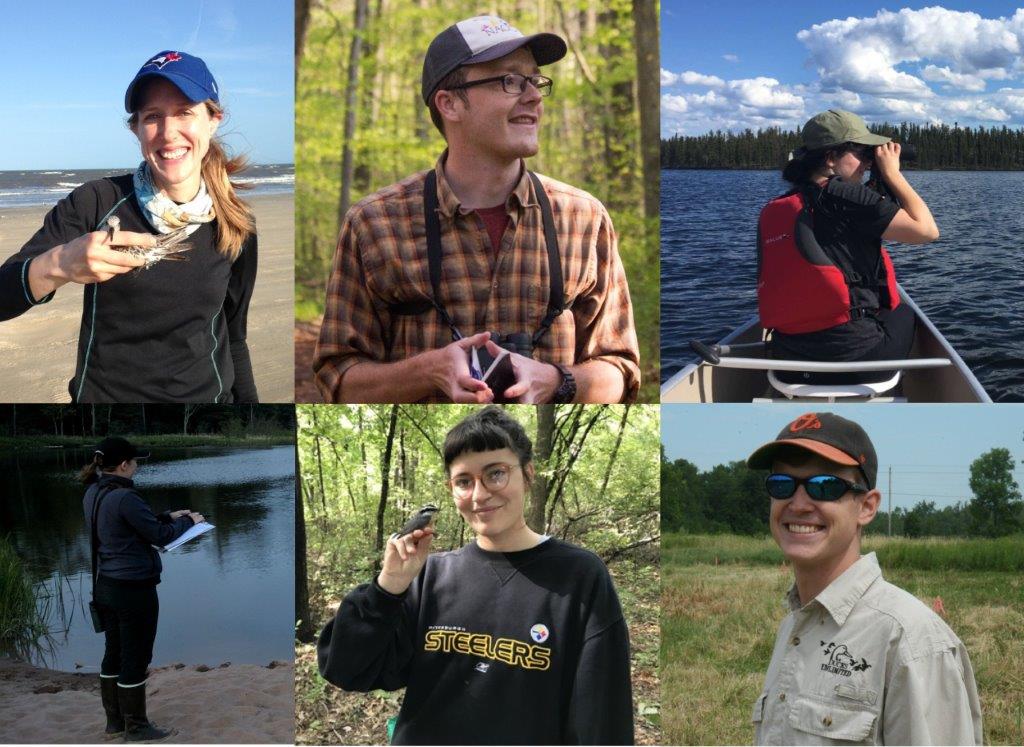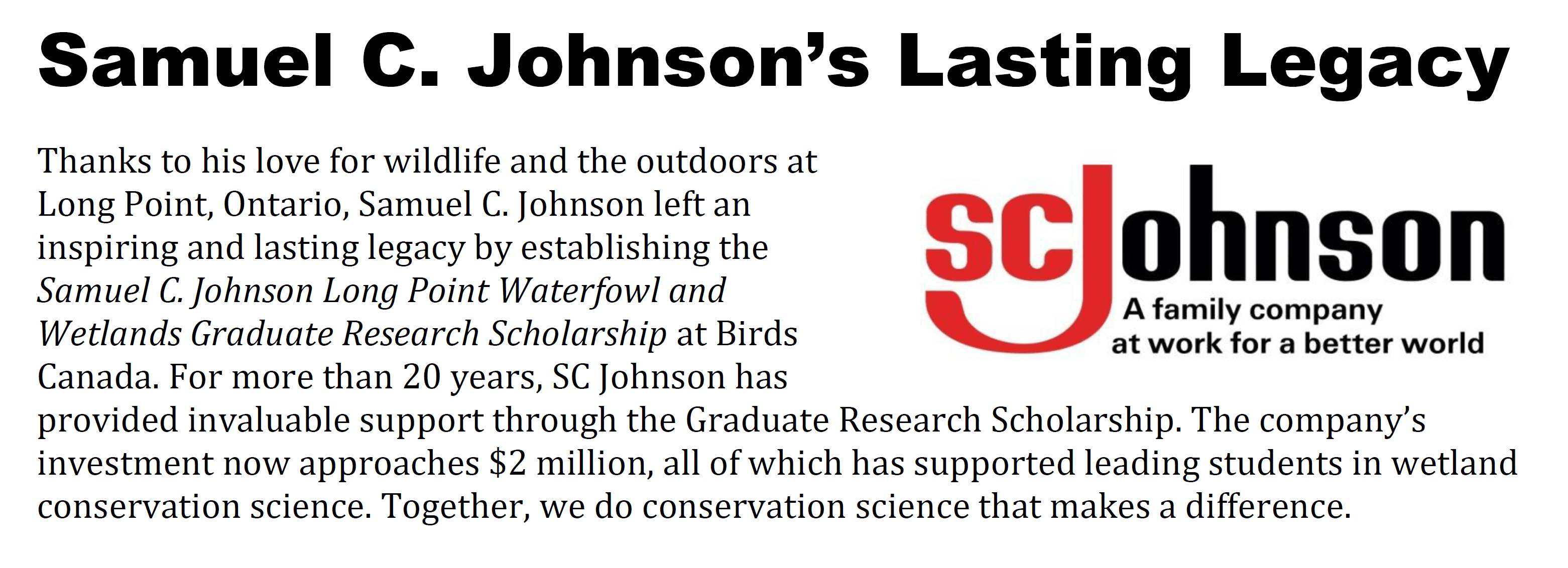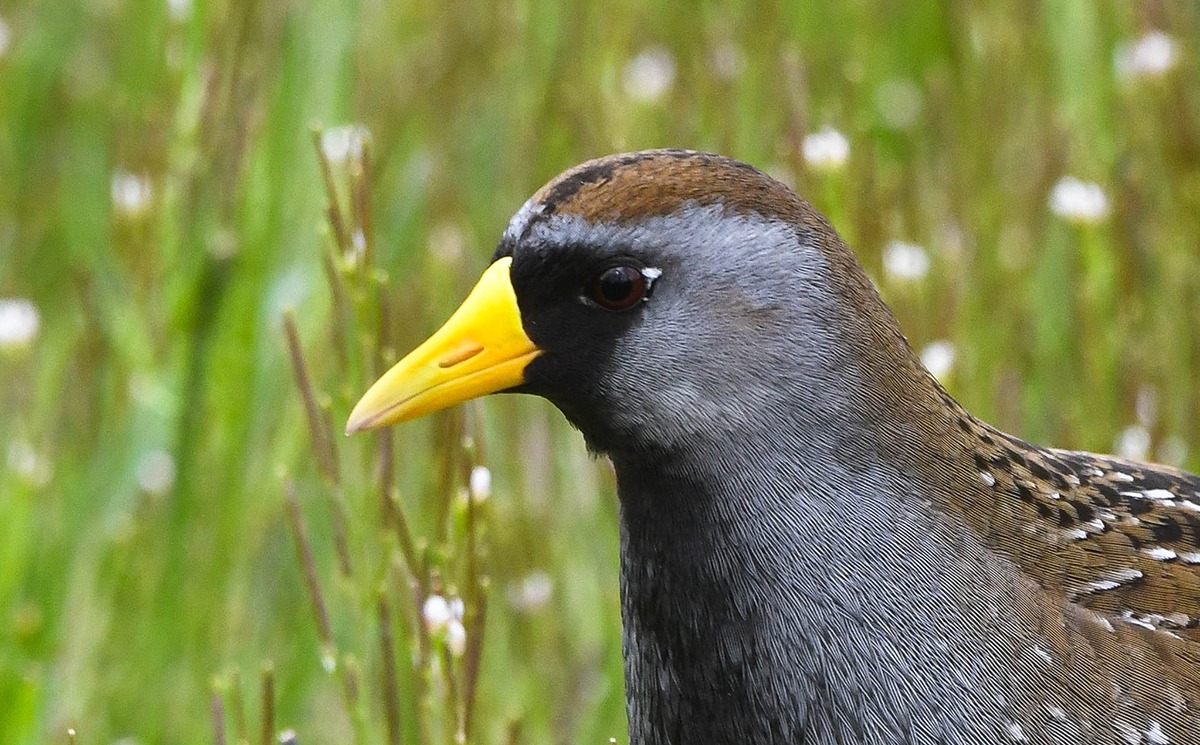By Dr. Doug Tozer, Director, Waterbirds and Wetlands, Birds Canada
A recent project out of Birds Canada’s Long Point Waterfowl and Wetlands Research Program explored how a wetland management technique known as “draw downs” (lowering the water level) impacts birds and bird habitat in the Montezuma Wetlands Complex, just south of Lake Ontario in New York State.
The research team found differences in the amount of open water, type of vegetation, and abundance of food for wetland birds between areas where a full or partial draw down had been done compared to areas where managers had not changed the water level (i.e., “passive wetlands”). Overall, there were more rails, Common Gallinules, and Pied-billed Grebes in spring and summer in the partially drawn down and passive wetlands compared to the wetlands that had been fully drawn down. In fall, ducks were most numerous where there had been full draw downs. The researchers concluded that management of these wetlands should focus on providing a mix of full draw downs and passive wetlands to provide habitat for the greatest number of bird species throughout the year.

Sora Photo: Trisha Snider
Ed Farley led this research, and is the Long Point Waterfowl and Wetlands Research Program’s most recent MSc graduate. Ed was excited to have this opportunity to pursue research with real-world applications: “By studying water level management on restored wetlands, I hope that similar wetlands will be managed to more effectively provide habitat for the wide range of wildlife that rely on them.”
Ed reflects that this experience with the program helped him grow professionally and personally. “The techniques that I’ve learned have direct applications in my current job as a biologist with Ducks Unlimited. My research also advanced my knowledge of wildlife and especially plants where my past experience was lacking.”
This story is just one recent example highlighting the value of the Long Point Waterfowl and Wetlands Research Program at Birds Canada. Not only does the program generate research results that inform management and conservation, it helps develop the careers of science and conservation professionals.
The program was established in the late-1980s to conserve waterfowl and other wetland wildlife and their habitats at Long Point, Ontario and across the lower Great Lakes through research and monitoring. The program has published to date 90 peer-reviewed scientific publications written by 40 young professionals and their mentors at 55 universities and other research institutions. These publications answer timely questions of conservation interest that sustain healthier wetlands for wildlife and people.
But this is only the beginning. The program’s numerous young professionals often go on to distinguished careers in wetland research and conservation with provincial, federal, and state governments, universities, colleges, waterfowl associations, and consulting firms. Together, over the course of their careers, these conservation advocates represent a powerful force for conserving wetlands and their flora and fauna.

Here are some of the young professionals that have been supported by the Long Point Waterfowl and Wetlands Research Program. From left to right, top row: Dr. Kristin Bianchini (postdoctoral researcher); Jackson Kusack (PhD); Laura Stewart (research intern). Bottom row: Dr. Lisa Elliott (PhD); Tara Hohman (MSc); Edward Farley (MSc).
The Long Point Waterfowl and Wetlands Research Program’s “army” currently consists of 11 young professionals who, along with their mentors, are working on 18 different wetland research conservation projects. Like Ed, each of our young professionals will go on to apply what they have learned during their time with us—to the benefit of wetlands, wildlife, and people for many years to come.
We thank all supporters of Birds Canada for being part of our waterfowl and wetlands research and conservation work. We are indebted to the Long Point Waterfowl and Wetlands Research Program’s partners, currently including: individual donors, Black Duck Joint Venture, Canadian Wildlife Service, Ducks Unlimited Canada, Eastern Habitat Joint Venture, Environment and Climate Change Canada, Great Lakes Restoration Initiative, Government of Canada, Government of Ontario, John and Pat McCutcheon Charitable Foundation, Mitacs, Nature Conservancy of Canada, Ontario Ministry of Natural Resources and Forestry, SC Johnson, TD Friends of the Environment Foundation, The Bluff’s Hunting Club, U.S. Environmental Protection Agency, U.S. Fish and Wildlife Service, Wildlife Habitat Canada, and Winous Point Marsh Conservancy.
For more information on the Long Point Waterfowl and Wetlands Research Program, click here.


